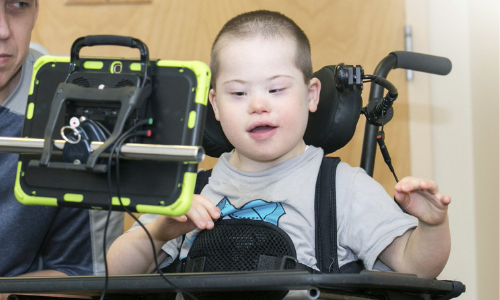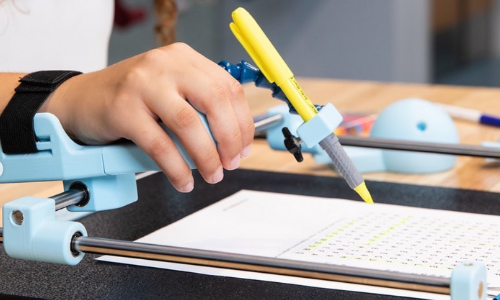
Assistive Tech Improves Life for People With & Without Disabilities
Blog by Olivia Murphy
 Assistive technology has always been an essential part of disabled people’s lives. Assistive technology allows disabled people in society to complete everyday tasks without difficulty. You may be thinking, “I am not disabled. How does this have to do with me?” Well, it is simple. Although assistive technology is used by people who have disabilities, non-disabled people commonly utilize it in their everyday lives. An example of this is iPhone’s Siri and Amazon Echo’s Alexa voice assistants; both technologies can help you search on the web to answer questions, type notes, call people, play music, and more.
Assistive technology has always been an essential part of disabled people’s lives. Assistive technology allows disabled people in society to complete everyday tasks without difficulty. You may be thinking, “I am not disabled. How does this have to do with me?” Well, it is simple. Although assistive technology is used by people who have disabilities, non-disabled people commonly utilize it in their everyday lives. An example of this is iPhone’s Siri and Amazon Echo’s Alexa voice assistants; both technologies can help you search on the web to answer questions, type notes, call people, play music, and more.
Before computers, there were other types of assistive technology that disabled people utilized, but over time technology has evolved and keeps on evolving. For example, text-to-speech technology had to be specifically downloaded, and now that technology is built onto our computer systems. People who cannot speak now utilize eye gaze technology to communicate. People used to bring recorders with them; now, there are many free and paid app options. Some other examples of assistive technology include screen readers, magnifiers, recorders, and word prediction software. All these tools have made a significant positive impact on disabled individuals who can use assistive technology to improve their way of life.
| Explore AT at ESMA | ||

Throughout my years in school, I have benefitted from using a variety of assistive technology devices and programs. Being born in the late ’90s, I don’t remember a world without computer-related assistive technology; I had used variations of speech-to-text and recording applications. I remember when you had to buy different programs and download them through CDs, but now there is an app for everything. These technologies have made everything easier for me, especially throughout high school and college.
In short, countless assistive technologies make life easier for people with disabilities in a world not built for them.


